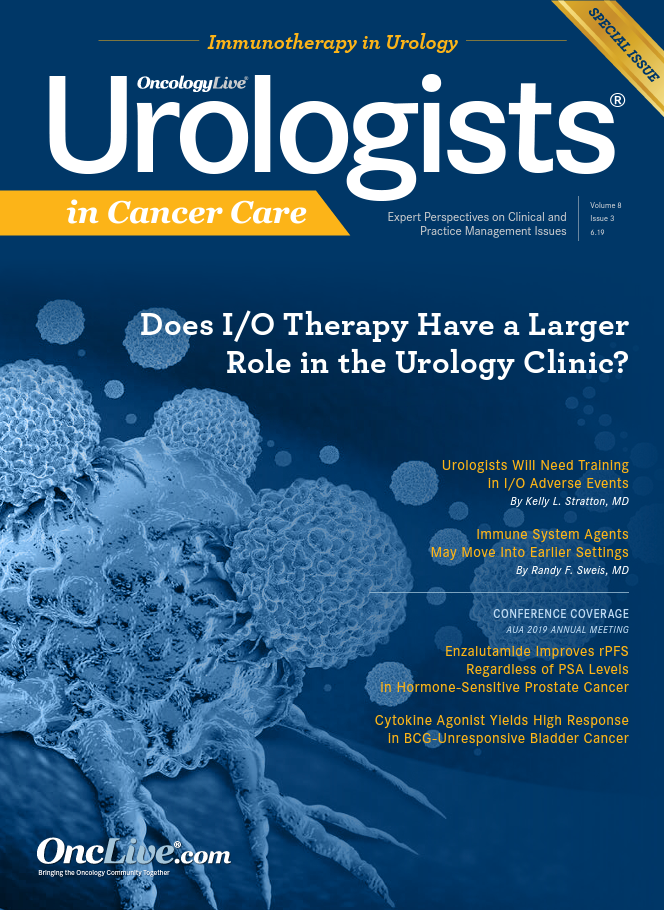Urology Austin Innovates to Deliver High-Quality Care
The decision to expand a practice comes with great financial cost and administrative effort. For Urology Austin, however, the benefits for their patients have outweighed the challenges of such growth.
Peter Ruff, MD

Peter Ruff, MD
The decision to expand a practice comes with great financial cost and administrative effort. Clinicians may expect to add new space, staff, and technology and spend more time in meetings. For Urology Austin, however, the benefits for their patients have outweighed the challenges of such growth.
Located in one of the fastest-growing metropolitan areas in the United States,1 Urology Austin provides services at 19 locations for patients across approximately 60 square miles of the Texas urban and suburban landscape, and coordination is key, according to Peter Ruff, MD, president of the practice.
“It’s a huge geographic area for all our outlying clinics, and although we cannot offer everything at each location, we can coordinate and make it as easy as possible for the patients to limit travel times,” Ruff said.
Advancing With Robotic Surgery
Austin was the 11th-largest city in the country in 2016, with a population growth rate of 3% annually.2 But this growth was not the only thing driving Urology Austin to expand. Advances in radiation therapy for urologic cancers prompted significant expansion this year at the Austin Center for Radiation Oncology, a high-volume prostate cancer treatment center run by Urology Austin. “Ten years ago, we installed our original linear acceleration machine,” Ruff said. “But as dose consolidation therapy began gaining steam, we invested in new technologies to allow for that to happen.”
In addition, Urology Austin has incorporated safer and more efficient tools into its offerings for surgical procedures. In addition to its new radiotherapy equipment, Urology Austin now utilizes the da Vinci SP (single-port), robot-assisted surgical system, which affords minimally invasive procedures through a single incision or bodily orifice. Ruff and Urology Austin colleague Carl Bischoff, MD, were early innovators— the 14th and 15th surgeons, respectively, to be trained on the system.2
The da Vinci system can assist with benign prostatic hyperplasia procedures, radical prostatectomy, radical cystectomy, partial and radical nephrectomy, and pyeloplasty and other reconstructive urological procedures involving the kidneys, the ureter, and the bladder.
Ruff said these innovations have helped to improve treatment across the board for urologic cancers, including prostate, renal, and bladder, while improving palliative and primary care.
Members of Urology Austin are committed to improving the training of current staff as well as welcoming new hires to accommodate growth in patient volume. Maintaining standards of practice across multiple locations and more than 40 providers is uniquely challenging. In developing a high-quality approach to care, Urology Austin has consulted guidelines from the American Urological Association and the National Comprehensive Cancer Network. “Between those, we can identify what is the best care model that is reproducible throughout the entire practice,” Ruff said.
Executive committee meetings, held twice a month, enable elected representatives from the different locations to sit down with CEO Patrick A. Murphy, have a say in important decisions, and keep the channels of communication open.
Consolidating Patient Care
Urology Austin strives to offer as many urology services as possible in house. Practice professionals include a radiation oncologist, pathologist, surgeons, pharmacist, and pelvic floor rehabilitation physical therapists.
The practice’s advanced prostate cancer clinic employs practitioners with specialized training in the more advanced stages of cancer care. Physicians strive to provide not only up-to-date treatment but also appropriate sequencing of therapy to afford patients the best outcomes and highest quality of life.
The practice has invested in board-certified pathologist, radiologist, and surgeons, a policy that has shown “tremendous value,” Ruff said. Board certification is voluntary, may involve development of knowledge and skills, and is different from medical licensure, which is not specialty specific and denotes compliance with minimum competency requirements.
The practice also offers presurgical and postsurgical rehabilitation, employing in-house physical therapists who work with patients on pelvic floor rehabilitation.
Urology Austin’s emphasis on offering comprehensive urology care enables physicians to build referrals. “The majority of our oncologic surgery is referred within our practice, from our partners who see a lower volume of patients to our high-volume partners,” Ruff added.
Additionally, Urology Austin has strong interaction with support groups, such as the UsTOO prostate cancer support group. “Understanding that there are other aspects to oncologic care, above and beyond just doing surgery and providing psychosocial support, can benefit [our patients] as well,” Ruff said.
Closing the Gaps
To ensure that care provided at the practice is consistent, Urology Austin relies on data analytics software to identify divergence from standards, and providers are trained to watch for disparities and rectify any shortcomings. This helps ensure that patients are closely tracked over the course of therapy. “Unless you have somebody who takes charge of patient care, patients can get lost in referrals back and forth. Having everything under 1 roof, where there’s continuous communication among the different specialties, allows for that,” Ruff said.
“We have invested in advanced practice providers who are our champions, and we have data analytic software that skims through our electronic health records to make sure that patients have follow-ups and are referred to where they need to go,” Ruff added.
To cement this process, Ruff noted, Urology Austin has an in-house oncology certified patient navigator who works with our advanced prostate cancer care team to coordinate patient treatment and bring even more coherence to the care provided across locations.
References
- New Census Bureau estimates show counties in South and West lead nation in population growth [news release]. Washington, DC: United States Census Bureau; April 18, 2019. census.gov/newsroom/press-releases/2019/estimates-county-metro. html. Accessed May 15, 2019.
- Austin, Texas population 2019. World Population Review website. worldpopulationreview. com/us-cities/austin-population/. Accessed May 23, 2019.




